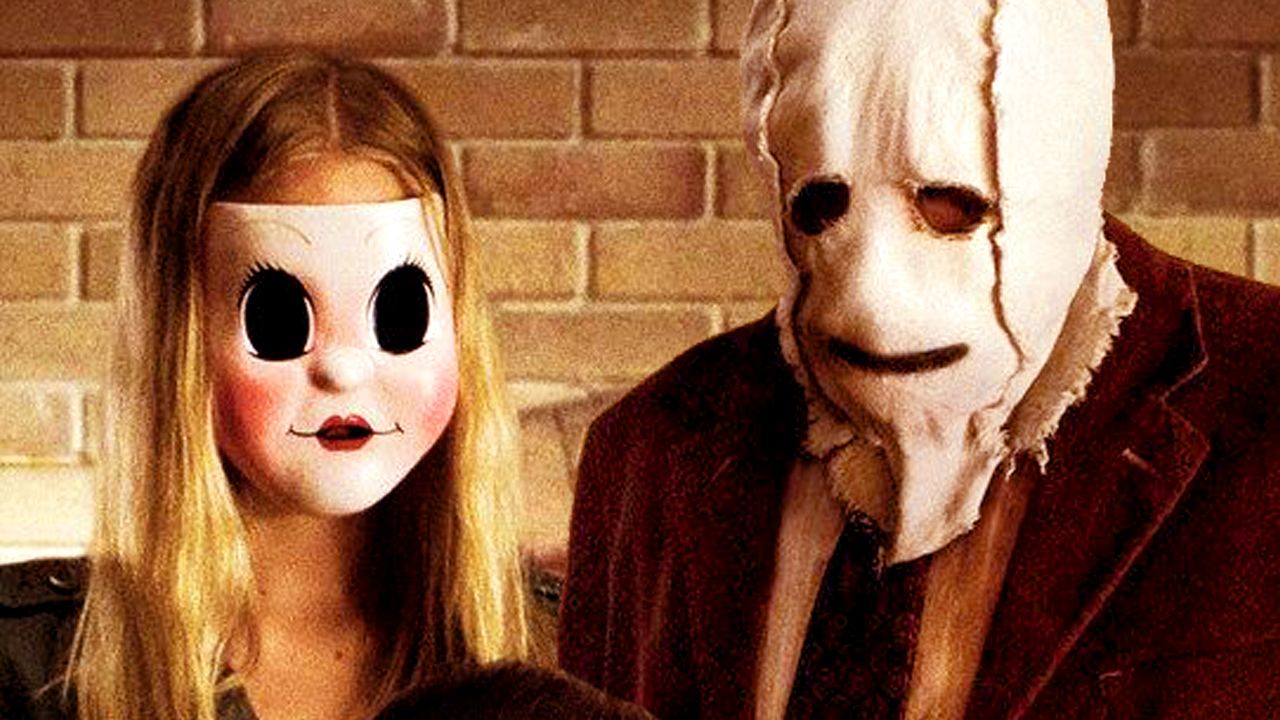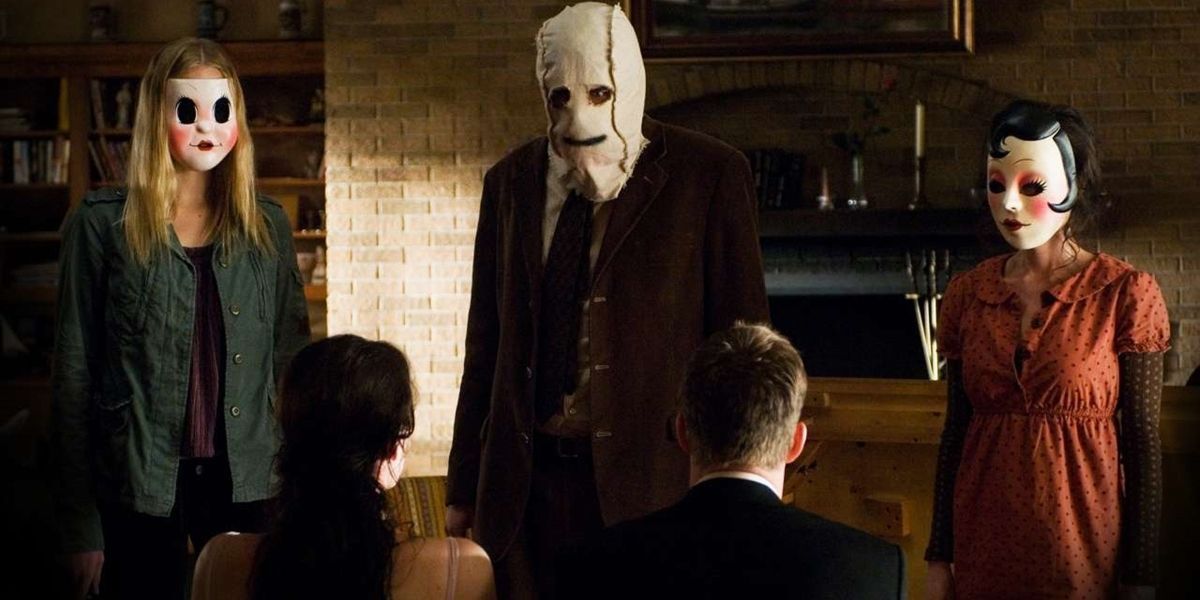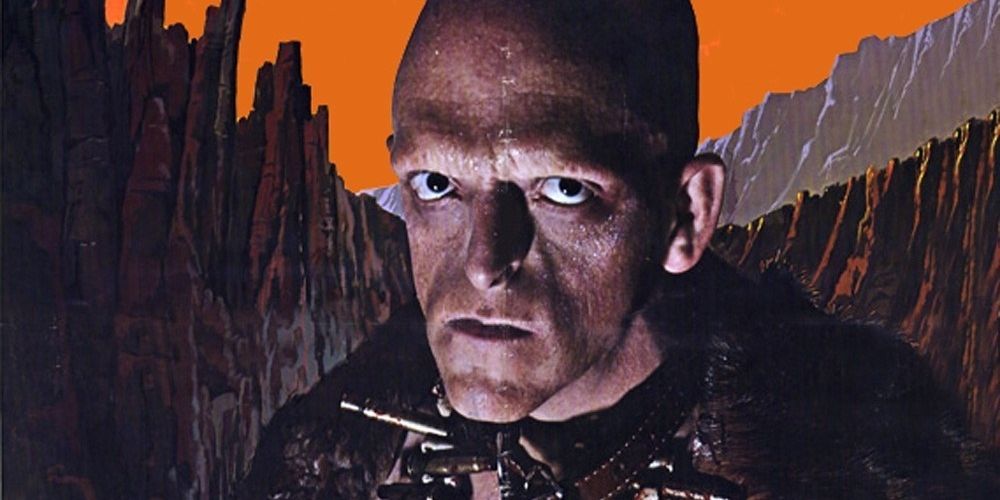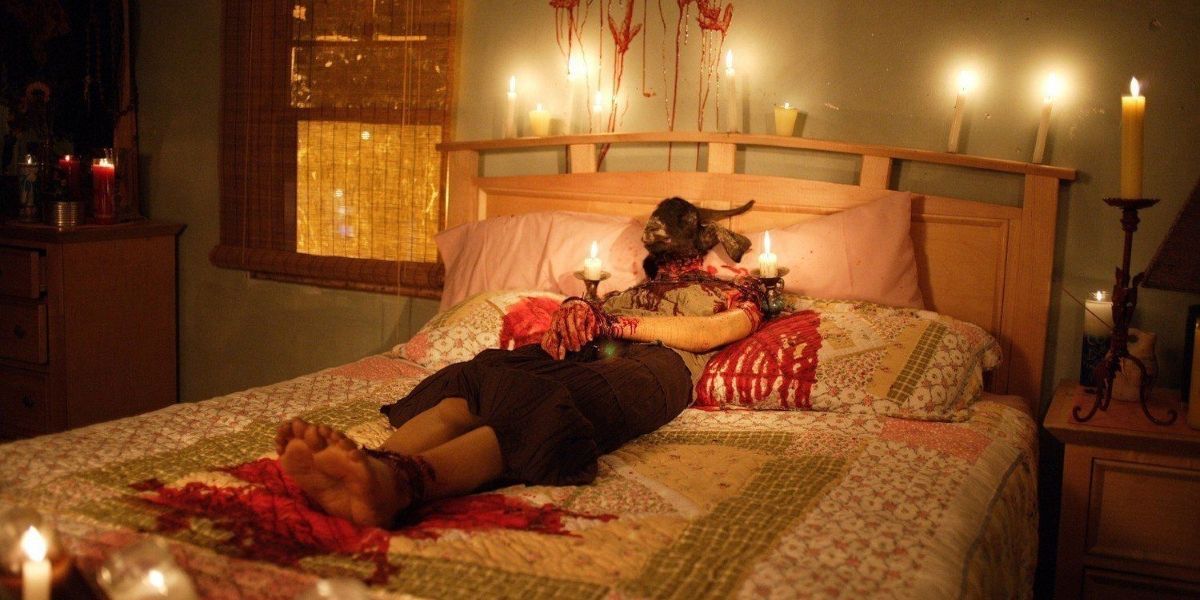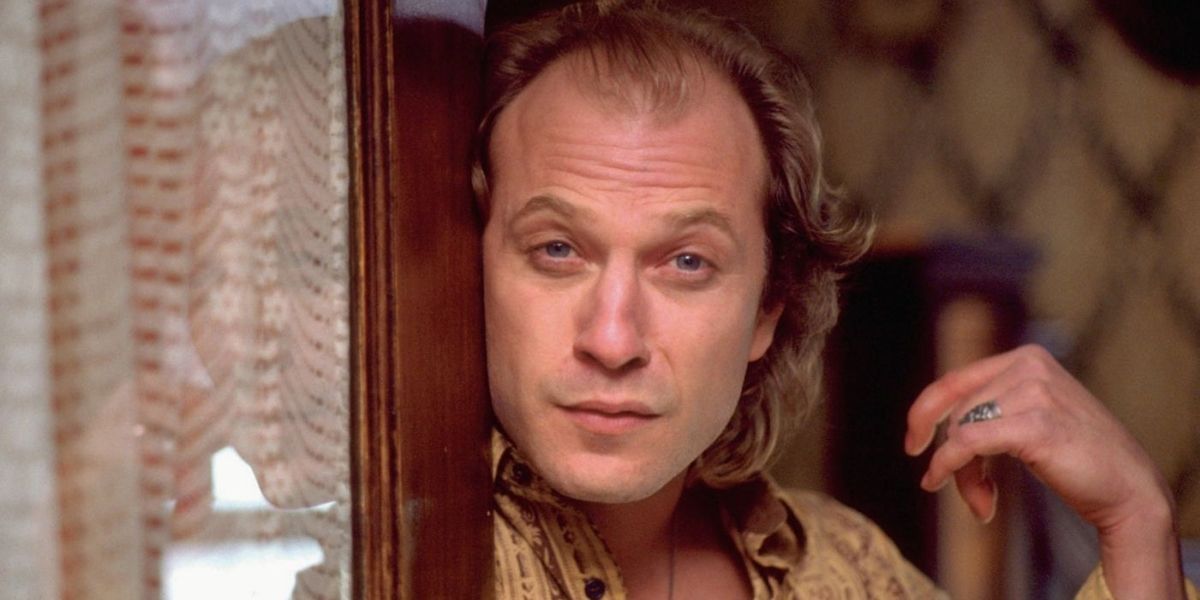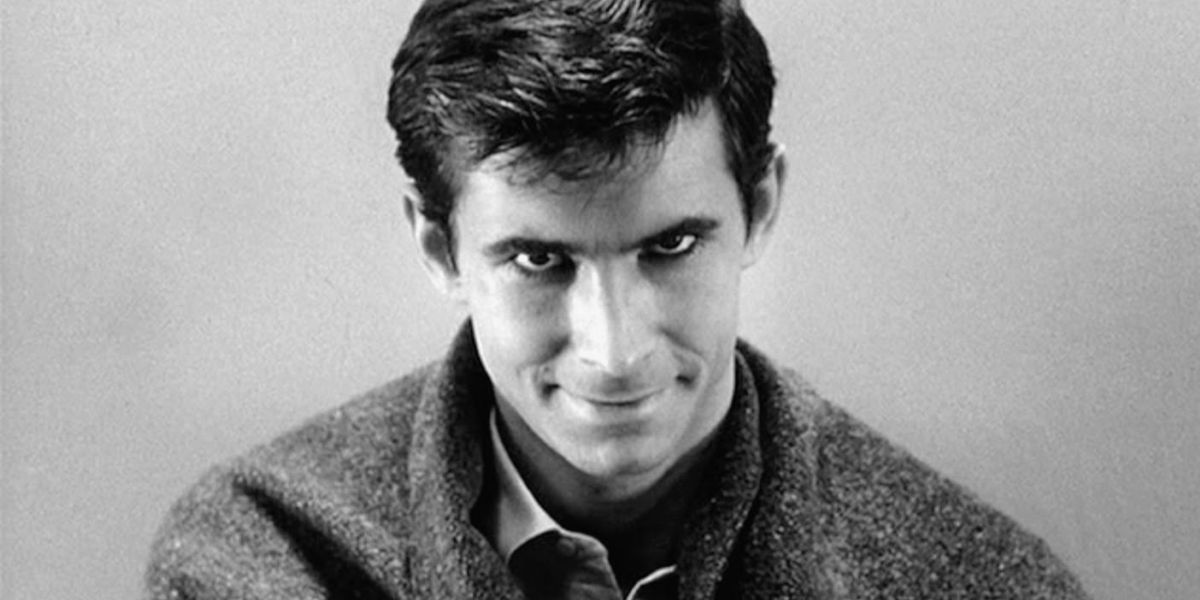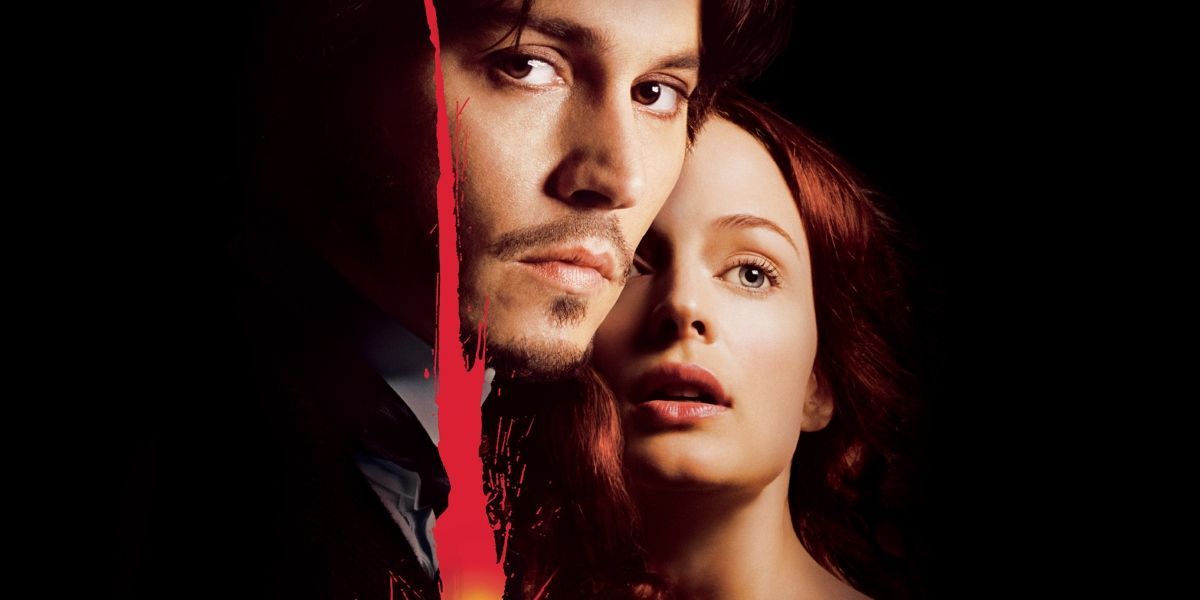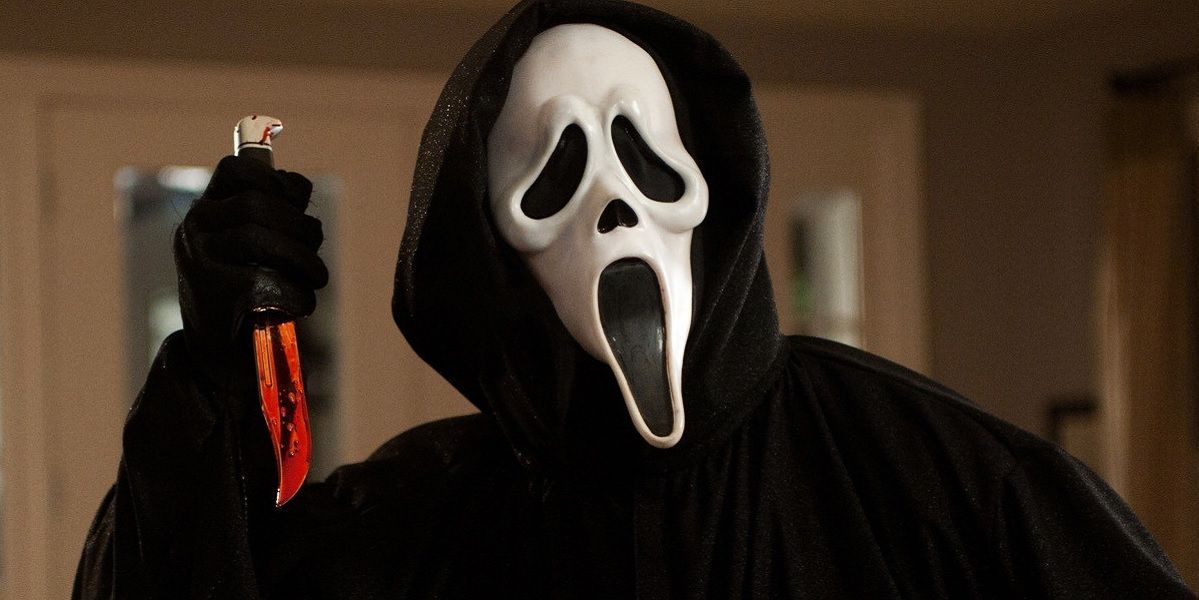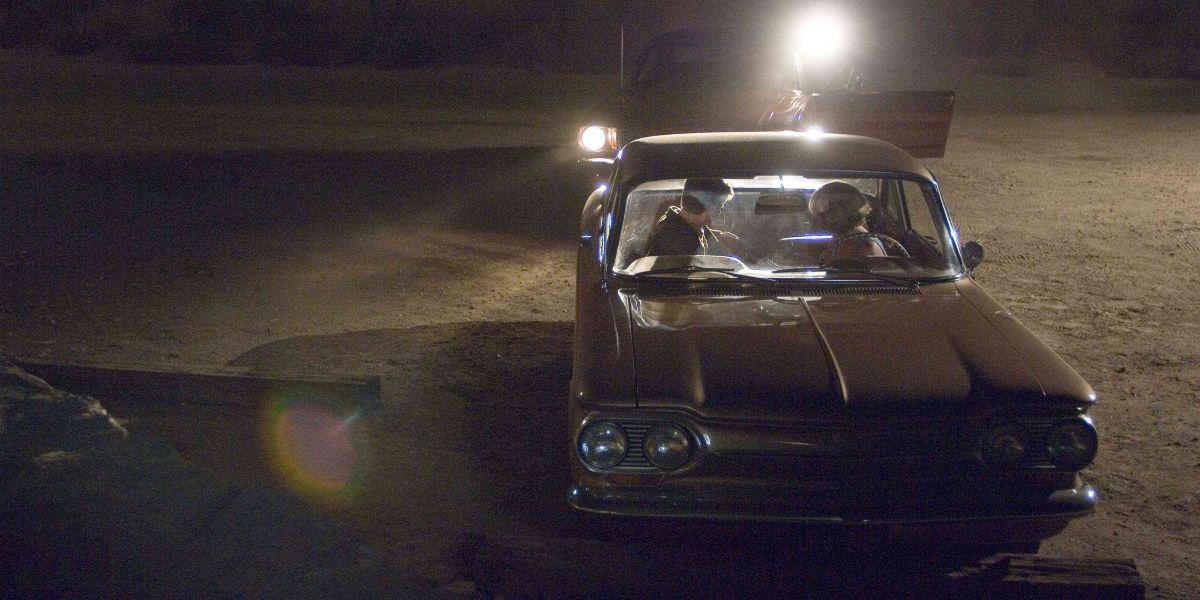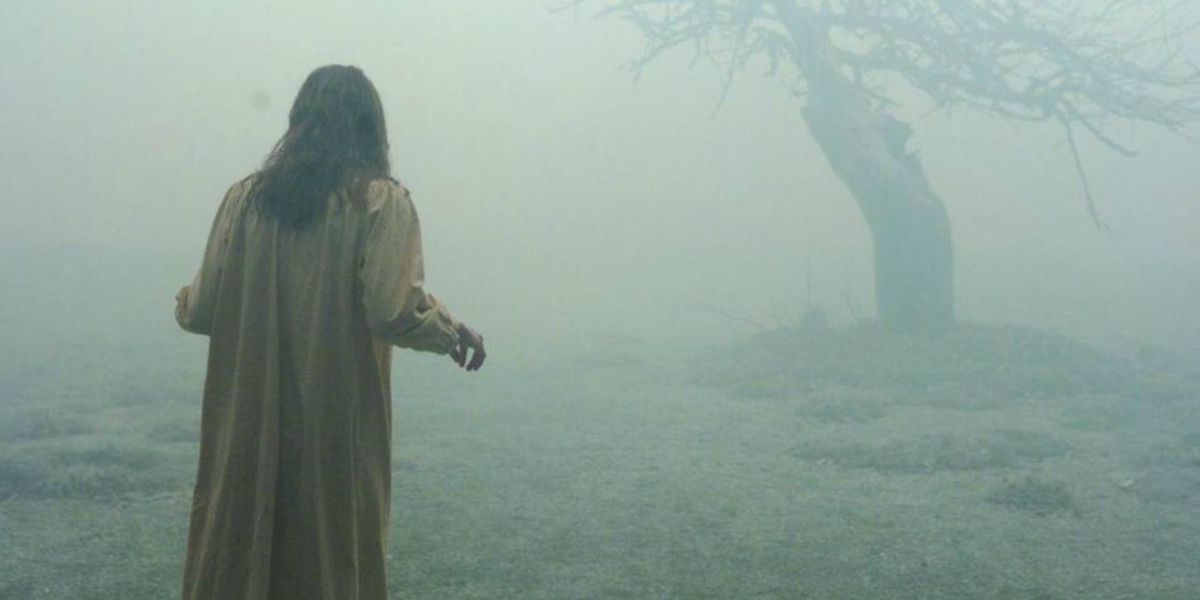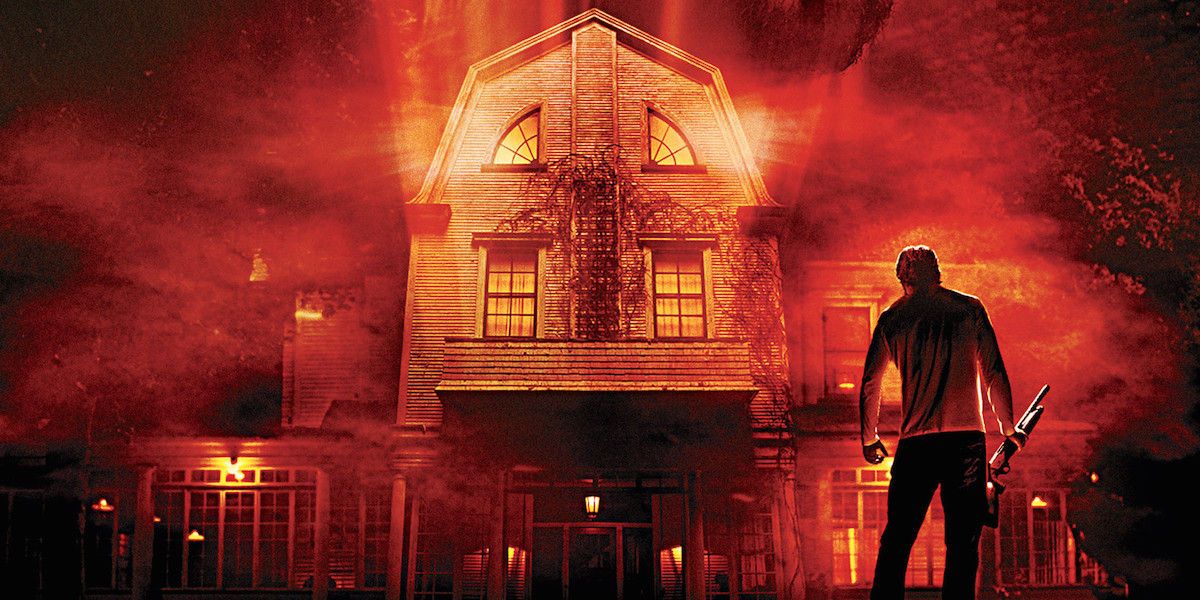Moviegoers have always been captivated by what they don't understand, and one of the biggest mysteries of human nature is a dark one: why do we kill? While there is a plethora of social science research into the issue of murder, it still fascinates writers and directors to this day, taking audiences are along for the ride. It's no secret that bad guys appear in film, but finding out that a psychotic on-screen events were based on a true case drives home the point that monsters are very, very real.
With that in mind, here are Screen Rant's 10 Real Stories Behind Terrifying Horror Films.
The Strangers (2008)
Inspired by: The Keddie Cabin Murders and The Manson Family
In 2008, writer and director Bryan Bertino introduced viewers to a sick, twisted game of cat and mouse in The Strangers. Opting to stay in for a romantic evening in their secluded summer house, a young couple is stalked and terrified by three mask-clad maniacs with no means of escape. Drawing inspiration partly from his own life, Bertino’s childhood neighborhood experienced a wave of home invasions, the criminals responsible even coming to his front door. Other insight came from the still unsolved Keddie Cabin Murders of 1981, in which strangers murdered a mother and her children in a remote California cabin. The bulk of his inspiration, however, came from the infamous exploits of Charles Manson and his Family, who were responsible for the deaths of 9 people over the summer of 1969, including very pregnant actress Sharon Tate (wife of director Roman Polanski). Members of the family arrived at Tate’s home, cut the phone lines, broke in, and ruthlessly murdered everyone inside, acting under the mentorship of Charles Manson, whose word they followed religiously.
The Hills Have Eyes (1977)
Inspired by: Alexander "Sawney" Bean
Wes Craven has a taste for the disturbing, and his 1977 offering The Hills Have Eyes is no exception. After car trouble throws a wrench in their road trip plans, a family is terrorized as they are stalked by a clan of cannibals through the Nevada desert. The Scottish tale of Alexander “Sawney" Bean is heavily referenced throughout the film. Rumored to be the leader of a clan of cannibals, rapists and murderers 48 strong, Bean and his inbred horde lived in a secluded cave, leaving only to hunt travelers in the night, their remaining body parts washing up on beaches around Scotland. It’s claimed that Bean and his clan were captured by James I of Scotland, before being dismembered and left to bleed to death by the king’s 400 man strong army. Craven released a sequel to the film in 1985, but disowned it shortly after, leading many to believe the move was financially motivated.
Borderland (2007)
Inspired by: Adolfo de Jesús Constanzo
Zev Burman’s disturbing 2007 offering Borderland shows what happens to American spring-breakers after being kidnapped outside of Mexican bars and offered up as human sacrifices in the name of the divine. Written by Burman, the film takes several cues from the real-world case of Adolfo de Jesús Constanzo, killer, drug dealer, and cult leader. Born to a teenage Cuban immigrant, Constanza was baptized Catholic before transitioning to Palo Mayombe, a voodoo-inspired religion brought to Cuba by slaves from the Congo Basin in Central Africa. Respect toward ancestral spirits and sacred objects are central to the Palo religions, where ritual sacrifice is believed to appease the gods. Raised by criminals, Constanzo started his criminal career off with grave robbing, escalating to the human sacrifice of an estimated twenty victims, many of them rival cocaine dealers. After he and several followers kidnapped a student outside a bar in Mexico, an investigation was launched that led to the discovery of the organization’s headquarters, furnished with cauldrons and dead cats. Surrounded by police in Mexico City, Adolfo ordered one of his disciples to kill him before the police could, dying before justice was served.
The Silence of the Lambs (1991)
Inspired by: Ted Bundy, Jerry Brudos, and Ed Gein (among others)
Released in 1991, The Silence of the Lambs shook audiences to the core with the story of rookie FBI Agent Clarice Starling (Jodie Foster) who is tasked with solving a series of grisly murders. Unbeknownst to her, the man responsible is Buffalo Bill, who has been kidnapping, starving, and then skinning victims to make a female bodysuit for himself. In Buffalo Bill’s House-O-Skins there are references aplenty to several real-life madmen including Ted Bundy, Jerry Brudos, and old Hollywood favorite Ed Gein, who's murderous spree has inspired elements of the most terrifying serial killers in film. Bundy frequently faked injury to lure women into his car, Brudos dressed in his victims clothing, and Gein did actually make a female skin suit. While audiences may be familiar with Geins footprint on the character of Buffalo Bill, he actually inspired a notorious character who appeared much earlier than 1991.
Psycho (1960)
Inspired by: Ed Gein
Touted by many as Hitchcock’s greatest film, the 1960 classic Psycho also includes one of the greatest villains of all time, Norman Bates. On the lam after having stolen $40 000, Lila (Janet Leigh) checks into the Bates Motel to wait out a storm. After spending the evening being weirded out by Norman, she ends the night with a shower… of blood. The similarities between Ed Gein and Norman Bates are many. The two men each had overbearing mothers, shrines dedicated to them, and had a penchant for their clothing. Raised in isolation and punished for making friends, Gein grew up taking care of his spiteful mother up until her death in 1945, when he began to turn human bones and skin into bowls, corsets and lampshades among other things, all of which were destroyed by officers after their discovery. Found guilty and ruled insane, Gein died in a mental health institute in 1984, and due to the consistent vandalism of his headstone, lays in an unmarked grave in Plainfield, Wisconsin.
From Hell (2001)
Inspired by: Jack the Ripper
The infamous Jack the Ripper killings of Whitechapel, London remain unsolved to this day, adding an element of legitimate terror to Albert Hughes’ 2001 flick From Hell. Set in 1888, the movie follows the hunt for a murderer who has a thing for mutilating prostitutes. From Hell is an adaptation of a graphic novel of the same name, written by Alan Moore of Watchmen fame. While both sources take liberties with historical accounts of Jack the Ripper’s murderous spree, there are many aspects taken straight from history. The films title, for example, is taken from a letter allegedly written by Jack the Ripper, sent to the main investigator in the case, in which he describes removing and eating a half of one of his victims kidneys, and included the other half in with the letter. Named for “ripping up” his victims, Jack the Ripper roamed the poverty-stricken streets, hunting for women whom he could murder, with the intention to dissect their bodies. While some historians have linked five victims to him, other estimates go as high as eleven, with his identity remaining unknown.
The Black Dahlia (2006)
Inspired by: The Black Dahlia Murder
Brian De Palma’s 2006 release The Black Dahlia follows detectives as they search for the person who murdered a beautiful young woman named Elizabeth Short. While the film takes a few extra twists and turns, the real life story of Miss Short is even more gruesome. Born in Boston, Elizabeth moved to the west coast with the hopes that the warm climate would settle her debilitating asthma. Her murder in January of 1947 rocked the media not because she was young and so beautiful, but because of what was done to her. Found unclothed and mutilated in a field, Miss Short’s body had been drained of blood, cut apart and posed in a chilling tableau. The final shock came after discovering that the killer had left her with that is known as a “Glasgow Smile,” deep cuts to her facial tissue that extended from the corners of her mouth outward to the ears. As highly publicized as the investigation was in January of 1947, her tragic death remains unsolved to this day.
Scream (1996)
Inspired by: Gainesville Ripper Danny Rolling
The slasher flick that spawned a franchise, 1996’s Scream tells the story of a masked murderer referred to as “Ghostface” who targets students, and was written after Kevin Williamson watched a news report about the Gainesville Ripper. A one man murder spree, Danny Rolling, who would become known to the works as The Gainesville Ripper, grew up with an abusive father who took every opportunity to make his son feel like a failure. Maladjusted to society and craving the kind of fame Ted Bundy received during his homicide frenzy, Rolling began to develop intense cruel tendencies that progressed from the attempted murder of his father to savagely stabbing and murdering five students and a family of three in Gainesville, Florida. Arrested in 1990 on an unrelated charge, Rolling confessed to the crimes but offered no remorse, right up until he was given a lethal injection in 2006.
Zodiac (2007)
Inspired by: the Zodiac murders
While this case has been the inspiration for countless songs, books, and even the character of Scorpio from Dirty Harry, the 2007 David Fincher-directed Zodiac sticks the closest to the facts of the case, allowing viewers a glimpse at the chaos induced by a string of seven murders in the ten months spanning from December 1968 to October 1969. During the investigation, Zodiac toyed with the authorities and sent coded letters, known as cryptograms, to newspapers in the area. Claiming that his identity would be revealed if the code was broken, the media frenzy surrounding the slayings inspired many from all walks of life to try and solve it. Librarians, reporters, scientists and handwriting analysts all lent their expertise to the case. The film does a great job at portraying just how involved the codebreakers became, but also points pretty clearly at one suspect, a luxury that real-life investigators still do not have, and the case remains unsolved to this day.
The Exorcism of Emily Rose
Inspired by: Anneliese Michel
One of the scariest movies of all time, The Exorcism of Emily Rose tells the story of an exorcism gone terribly, terribly wrong. After Father Moore (Tom Wilkinson) fails to eradicate the demons possessing her body, Emily dies, prompting the authorities to charge him with negligent homicide. As shocking as it seems, the story is based in reality, and pulls from the real-life case of deeply religious Anneliese Michel, who passed away in 1975 after undergoing an exorcism to rid her of the satanic forces she believed were inhabiting her body and mind. After other various treatments failed to cure her, Anneliese and her family enlisted the help of two priests, who performed the ritual in secret, spanning ten months long. Malnourishment and dehydration were the officially documented cause of death, and Annaliese’s parents as well as the priests involved were charged, tried, and found guilty of negligent homicide.
Conclusion
While nuggets of truth are often incorporated into the sick and twisted maniacs portrayed on screen, and obviously this is only a small sample of mankind's horrific potential. It just goes to show that sometimes life is stranger than fiction.
So what do you think of our list? Sound off in the comments below and don't forget to subscribe to Screen Rant's YouTube channel for more awesome videos. And for even MORE horror movies based on real life, check out Screen Rant's list of the 10 Creepy Horror Movies Inspired by True Stories.

